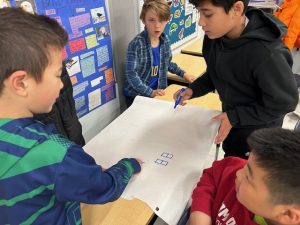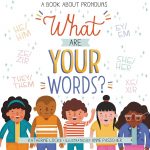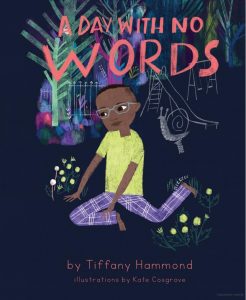 In Term 2, students have had many opportunities to work together in pairs or small groups. Thinking bigger picture, EVERYday we work together as a whole to help the classroom run smoothly. We often talk about how our actions contribute to the safety and comfort of everyone, and that learning to work together takes practice and reflection. There are times when we might have disagreements or frustrations, and how we decide to get through those challenges has a learning curve. Emotions can be big! Adults know that when they go to work they aren’t going to be friends with everyone, but they do have to work together to achieve common goals. In school, when children are still developing their self-regulation strategies and social skills, group work can feel very intense. We continue to build our resilience, communication skills, and self-regulation strategies as we learn together in groups.
In Term 2, students have had many opportunities to work together in pairs or small groups. Thinking bigger picture, EVERYday we work together as a whole to help the classroom run smoothly. We often talk about how our actions contribute to the safety and comfort of everyone, and that learning to work together takes practice and reflection. There are times when we might have disagreements or frustrations, and how we decide to get through those challenges has a learning curve. Emotions can be big! Adults know that when they go to work they aren’t going to be friends with everyone, but they do have to work together to achieve common goals. In school, when children are still developing their self-regulation strategies and social skills, group work can feel very intense. We continue to build our resilience, communication skills, and self-regulation strategies as we learn together in groups.
This term some group work experiences included: literature circles, a science project, Community Circle, during games in P.H.E, making music, sharing supplies, Metis finger weaving, gardening, and more!
During Community Circle on Monday, we discussed some of the ways we’ve worked together in groups, and the actions we take that contribute to our success in meeting our task goals. They included:
- compromise/be open to the ideas of others
- take turns
- include others
- use positive body language and spoken language

- discuss – listen, consensus
- share tasks – do what you say you’ll do
- trust
- respect
Next week, students will be reflecting on their own actions and words while working in groups and writing their Core Competency self-assessment. This document will be included in their report card after Spring Break.




 As part of our media literacy studies, and in preparation for Earth Day next week, students in Division 5 have been discussing the concept of “greenwashing.”
As part of our media literacy studies, and in preparation for Earth Day next week, students in Division 5 have been discussing the concept of “greenwashing.”


 Working in groups is a significant part of learning and decision making, in school and many career fields. This requires us to be active listeners and contributors in order to build understanding and work towards a common goal. On our first day back from Spring Break, it was time for a desk change. We’ve tried various arrangements throughout the year so far, but this time the students decided on how the desks should be organized.
Working in groups is a significant part of learning and decision making, in school and many career fields. This requires us to be active listeners and contributors in order to build understanding and work towards a common goal. On our first day back from Spring Break, it was time for a desk change. We’ve tried various arrangements throughout the year so far, but this time the students decided on how the desks should be organized. As a large group, we brainstormed the various arrangements they’ve experienced in the past, and discussed the possible design constraints (shape and size of the room, number of desks, etc). Then students broke into small groups, where each group used tiles to design a possible layout. They had to discuss and negotiate different possibilities before having to reach a consensus on which design they thought best suited our classroom. They recorded their designs on large paper and outlined pros and cons for their design, considering issues
As a large group, we brainstormed the various arrangements they’ve experienced in the past, and discussed the possible design constraints (shape and size of the room, number of desks, etc). Then students broke into small groups, where each group used tiles to design a possible layout. They had to discuss and negotiate different possibilities before having to reach a consensus on which design they thought best suited our classroom. They recorded their designs on large paper and outlined pros and cons for their design, considering issues  around use of space, mobility, and “chatter.” Groups presented their ideas to the whole class, and then students voted.
around use of space, mobility, and “chatter.” Groups presented their ideas to the whole class, and then students voted.
 The first was a “half ‘n’ half” portrait where one side was part of a lesson in proportionate sketching, and on the other side, students used symbolism to represent who they are and what they like. After reading What Are Your Words? students added descriptive words to their portraits.
The first was a “half ‘n’ half” portrait where one side was part of a lesson in proportionate sketching, and on the other side, students used symbolism to represent who they are and what they like. After reading What Are Your Words? students added descriptive words to their portraits.


 Division 5 is beginning to explore digital literacy and citizenship skills. We will be learning how to use technology in helpful ways, about our digital footprints and online privacy, how we interact with others, how to find information safely, and how we can keep a healthy balance between media and non-media in our lives.
Division 5 is beginning to explore digital literacy and citizenship skills. We will be learning how to use technology in helpful ways, about our digital footprints and online privacy, how we interact with others, how to find information safely, and how we can keep a healthy balance between media and non-media in our lives.
 Division 3 is learning to identify and reflect on the habits they have with digital media and devices.
Division 3 is learning to identify and reflect on the habits they have with digital media and devices.